LIFE
Shooting sex scenes and the importance of intimacy protocols
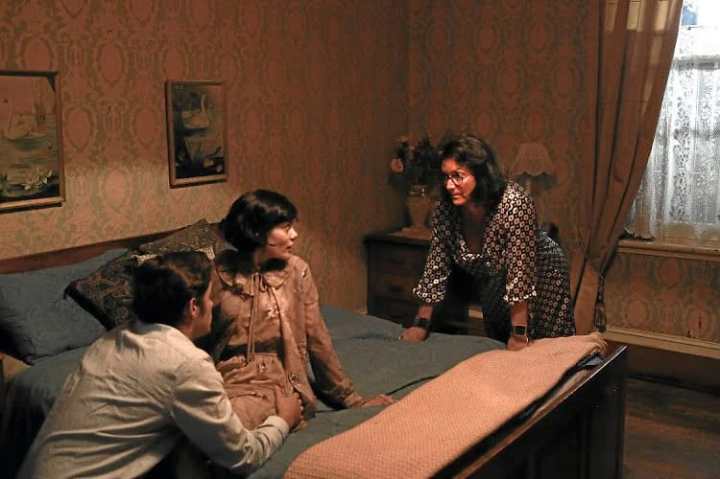
Intimacy coordination unveils accumulated psychological and emotional trauma, sometimes buried deep in unconsciousness. Giving consent to being touched is critical, but actors often have no experience of being asked for permission to be touched.
Why intimacy protocols?
Originally pioneered by stunt coordinators, intimacy coordination evolved out of the recognition of the potential harm to casts and crew when emotionally or sexually charged sequences are filmed irresponsibly. It gained traction in the US and Europe with the #MeToo movement in 2017.
Later, it was introduced at the 2019 Durban International Film Festival (DIFF) by UK-trained intimacy coordinator Kate Lush at the request of Sisters Working in Film and TV (SWIFT); and in April 2021 a wide-ranging consultation with representative bodies in the film and TV industry led to the launch of a series of intimacy protocols to guide writers, casting agents, producers, directors, actors and crews in the production of intimate film and TV content.
In South Africa, the Independent Producers Organisation (IPO) has even proposed a checklist (included in the protocols) for production companies that need an intimacy coordinator but don’t have the budget.
“Not all producers are going to be able to afford to have an intimacy coordinator on set, so in conjunction with the experts we have created a checklist for producers to be aware of and cognizant of as they go into creating intimate scenes on our sets, with the understanding that it is going to take us a number of years before these protocols – from a cost perspective – will be in every single budget that producers create,” IPO co-chair Thandi Davids said.
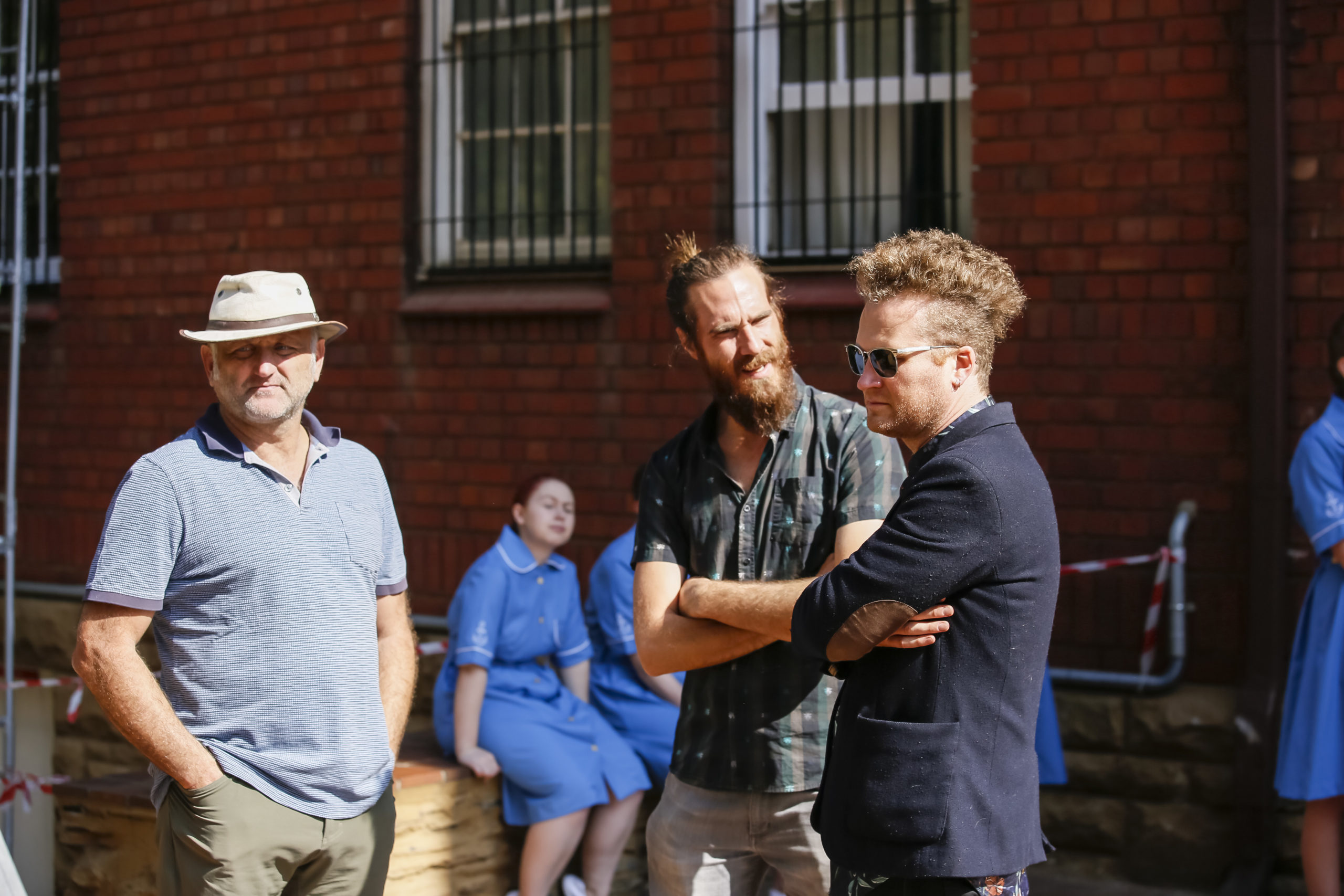
On the set of “Pou”. Image: Supplied
Film and TV director Sara Blecher, who has added intimacy coordinator to her toolkit over the past few years, understands these constraints from the inside and appreciates the dilemma confronting the industry, but she says: “If you are doing a tiny stunt, like someone tripping and falling, probably a production can manage it. But if you are going to do a stunt on a waterfall on a rainy day in the middle of a game reserve, that’s an extreme situation and you need a stunt coordinator whose total job is to make sure that everybody is safe and that the stunt looks good. You can’t cut corners for a fight scene on top of a waterfall and you can’t cut corners when it’s an intimate scene that has the potential to be damaging to the performers involved.”
Blecher, who is the founder and former chairperson of SWIFT, trained with the forerunner of intimacy coordination in the UK, Ita O’Brien, who also trained Lush. Blecher and Lush have formed a company, Safe Sets, which offers intimacy coordination to productions in South Africa and overseas.

Poster for the film “Pou”. Image: Supplied
Intimacy protocols on the set of South African film ‘Pou’
Although Blecher has worked as an intimacy coordinator on the sets of award-winning productions such as Isono and Gomora, she explains that her most challenging job to date is her first job on the set of the feature film, Pou (Peacock). “One of the things I wanted to do with this film,” director Jaco Minnaar said, “was to look back at where I came from as a white Afrikaans man; this extremely strange place that I grew up in the 80s and 90s, where patriarchal figures had a lot of influence in small, institutional and school spaces as well as at the level of government. Subjects like human sexuality and repression and guilt are part of this strange apartheid, conservative landscape that I came from, and I wanted to explore this through the characters in the film.”
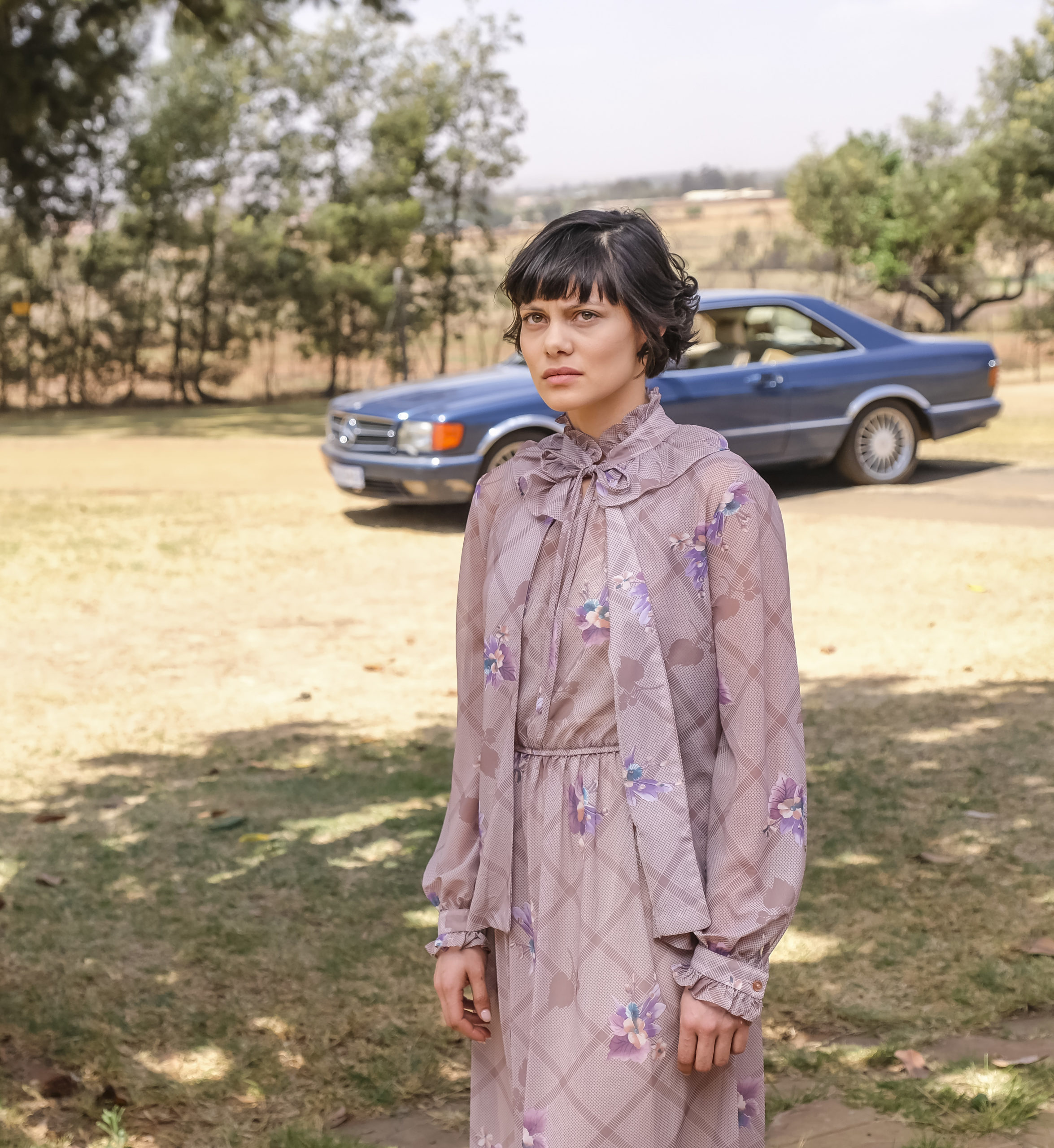
On the set of “Pou”. Image: Supplied
Minnaar’s writing and producing partner, David Cornwell, came across an article about Blecher in Screen Africa shortly after she returned to South Africa from training in the UK, and decided they needed her on the set of Pou.
“Intimate scenes were an important part of the story and the themes we were looking at. They weren’t just put in there for the sake of titillation for an audience or anything like that; so it felt like we needed a partner that we could bring into the production process to make sure that everything ran smoothly. We wanted to make a film that was ultimately sex-positive, and we wanted to ensure that everybody was comfortable with what they needed to do in these important moments in the storytelling.”
Blecher claims that her experience in Pou gave her a push into the deep end. Returning to South Africa after being trained in London, she was struck by how conservative South African TV is in terms of sexuality and nudity, and she didn’t expect her first job to be so demanding.
“I think Jaco intended to push boundaries,” Blecher says, “and the film absolutely does push boundaries in terms of intimacy, but in terms of a lot of things – in terms of religion, in terms of everything! And I think between the two of them – him and his producer – they were really cognizant of how much damage they could cause, and so they were really respectful of the intimacy coordination process.”
Intimacy coordination unveils accumulated psychological and emotional trauma and blockages, sometimes buried deep in unconsciousness. Giving consent to being touched is critical, but actors often have no experience of being asked for permission to be touched. Intimate scenes are “incredibly triggering” for female performers who “are probably at the higher end of the one in three women who have experienced abuse,” Blecher says. Producers and directors “cannot pretend they are not going to have to deal with these issues”.
In fact, Tarryn Wyngaard, who recently won a SAFTA for her part in the film Stam, plays the main role in Pou. She questions the pervasive insensitivity to women’s bodies in South African society. “What is it with this violence thing in South Africa that a man feels he can just take or touch or grab or whatever? What is underneath that ignorance? There must also be ignorance about the way that he thinks about his own body and his boundaries, and how he has been impacted.
“You don’t know what an actor’s previous experiences are, and when you are an actor and cast in a role, you are not asked, is there potential for this scene to be triggering and damaging for you? It is up to the intimacy coordinator to do a risk assessment and if the risk assessment says you need an intimacy coordinator, that’s where you can’t cut corners, and that is where you can’t use a checklist. Pou really was one of those films.”
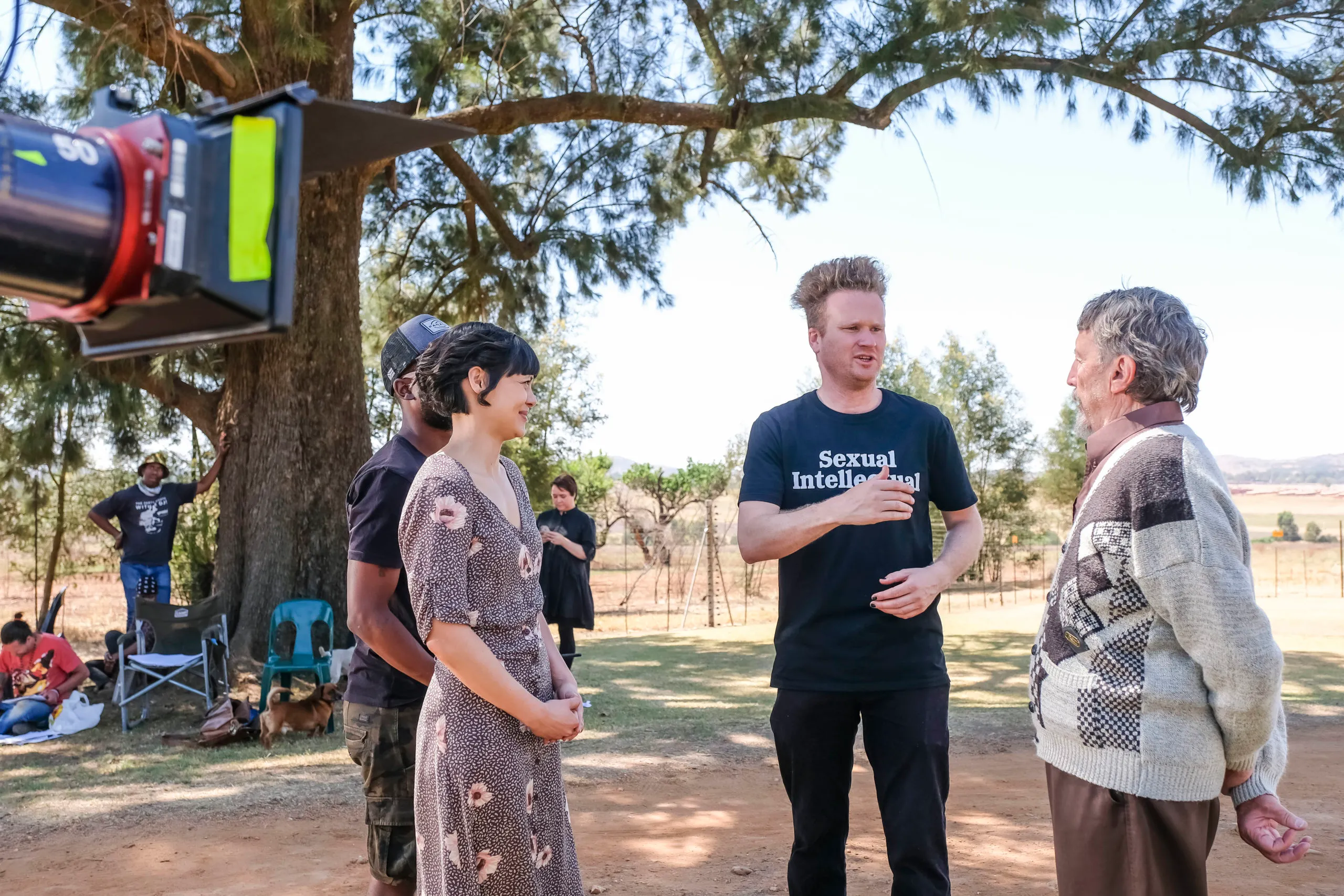
On the set of “Pou”. Image: Supplied
Minnaar was moved by the way in which one actor in particular struggled with the intimate material in the film. “I found it interesting because of the themes we were working with: the repression in our culture of everybody’s sexuality, but especially female sexuality. This was something that came out in these moments… Sara was such a good guide along the way, and somebody the actors could trust and, in the end, discuss a lot of personal matters with.”
One thing you absolutely cannot do as an intimacy coordinator is to allow an actor to escape into their minds in order to do an intimate scene. “That is allowing them to be raped or to be abused,” Blecher said. “Even if they are willing to just go away in their head and allow their body to perform, you just cannot allow that.”
How do ‘intimacy coordinators’ work?
The film Pou opens in an institution known as The Foundation where young women are educated to become nurses and caregivers. Very strict moral standards are upheld, which the main character transgresses by having a relationship with one of the other girls. As punishment, she is sent to look after an old man who turns out to be one of the originators of the school.
“There are a number of intimate scenes,” Minnaar says. Our main character, Anna, is very passionate; she has a strong sense of sexuality which comes out in various ways, even though she lives in this space of strong repression. Her sexuality and how it expresses itself are a thread that runs through the whole film.
“There is a moment when she is masturbating and then there is also the sexual moment she has with another girl in the institution that leads to her being expelled. Then there are also scenes on the farm with the old man she is sent to look after. She has to bathe him, and we needed help with that. Later in the film she develops a relationship with the doctor’s son, which leads to a sexual encounter.”

On the set of “Pou”. Image: Supplied
Several days were set aside for rehearsals before the filming began.
“Sara obviously got the script beforehand so she could analyse it and make her own notes and ideas about the intimate scenes. I also had strong ideas about how I wanted to shoot the scenes, and of course the performers had to put their own stamp on the scenes. So we all came together and rehearsed these scenes together,” Minnaar says.
“We talked about what everybody is comfortable with doing and what they will not do. We had to reach consensus on what we were going to finally put on film, what could be shown, what could not be shown, what could be touched and what could not be touched, etc, so that there was complete consent from everybody’s side on what we were going to do.
“The next step was to choreograph the scenes in advance, in much the same way that a dance or an action sequence is choreographed, so that everyone was clear about movements and timing and where the camera was going to be.
“Once you are on set there is a lot of pressure to make things happen, so by choreographing these scenes and working them out beforehand we knew exactly what to do and when,” adds Minnaar.
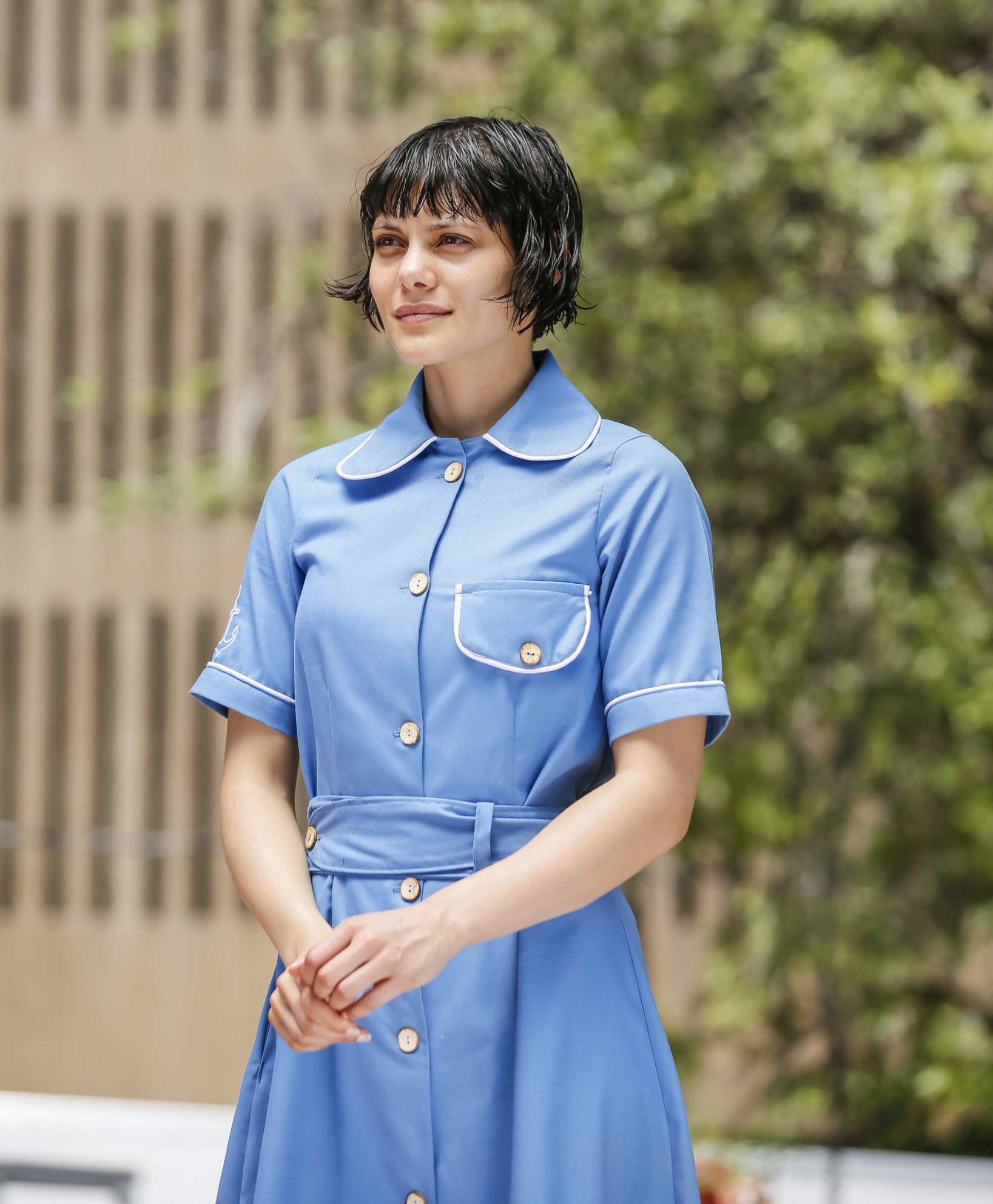
On the set of “Pou”. Image: Supplied
Wyngaard explains that she had “issues with shame and freeing the body and those kinds of traumas, so I was interested in exploring these themes as an actor. I knew it would be a challenge, and with harassment being so prevalent in our society and in the industry, I needed to be sure of exactly what was being asked of me.”
Although they had differences of opinion during filming, Wyngaard says they were fighting for the film, not against one another. “The fight was about showing skin initially. I was very particular about how the body would be seen. In my mind, I had a very technical idea that if it was just my head and my boobs that were shown, I wasn’t happy about that. I felt that it was gratuitous to cut me off just below my nipples. I wanted the body to be seen in context and the boobs just as part of the body. It was about how the body was being seen through the camera,” Wyngaard says.
Director of photography Jonathan Kovel adds: “Sexual harassment is pervasive everywhere, not just in South Africa, but the South African context is particularly virulent and deadly. It was important that this film, given its feminist subject matter, had an intimacy coordinator on set as an example for the industry in general as to how people need to be treated on set.”
Says Minaar: “Hopefully these protocols will make it necessary for everybody to work in this way. It doesn’t stop anything; it helps the process and, obviously, it stops anything bad from happening and people being exploited.” DM/ML
Pou will be released on the international festival circuit and online later in 2021.


















 Become an Insider
Become an Insider
Comments - Please login in order to comment.